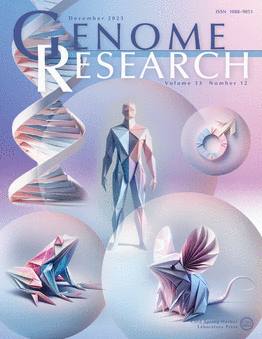神经退行性疾病中视网膜和脑小胶质细胞的分子和遗传景观
IF 5.5
2区 生物学
Q1 BIOCHEMISTRY & MOLECULAR BIOLOGY
引用次数: 0
摘要
小胶质细胞驱动的失调已成为许多神经退行性疾病的重要潜在机制,如年龄相关性黄斑变性(AMD)和阿尔茨海默病(AD)。虽然大脑和视网膜小胶质细胞都起源于卵黄囊,但尚不确定它们是否具有与神经退行性疾病相关的分子相似性或遗传和分子基础。在这项研究中,我们通过对来自11个不同研究的97个独立人类样本的单核RNA测序(snRNA-seq)和单核ATAC测序(snATAC-seq)的综合分析,研究了视网膜和脑小胶质细胞的转录组学和表观遗传学特征。我们的研究结果表明,与视网膜和大脑中的其他细胞类型相比,视网膜和脑小胶质细胞具有相似的表达和调节特征。通过整合全基因组关联研究(GWAS)数据和基因表达谱,我们证明了与AMD和AD相关的遗传变异与小胶质细胞特异性基因特征有关。此外,将调控注释与GWAS数据相结合表明,AMD和AD的易感位点在大脑和视网膜小胶质细胞的开放染色质区域显著富集,强调了它们与这些神经退行性疾病的相关性。最后,与来自其他组织的小胶质细胞注释的比较突出了与神经退行性疾病相关的小胶质细胞的特异性富集。这些发现有助于理解小胶质细胞在AMD和AD发病机制中的作用,并为利用视网膜和脑小胶质细胞的资源加深我们对它们在神经退行性疾病遗传变异中的作用的理解提供了机会。本文章由计算机程序翻译,如有差异,请以英文原文为准。
Molecular and genetic landscapes of retina and brain microglia in neurodegenerative diseases
Microglia-driven dysregulation has emerged as a significant underlying mechanism in many neurodegenerative diseases, such as Age-related Macular Degeneration (AMD) and Alzheimer's disease (AD). While both brain and retinal microglia originate from the yolk sac, it is uncertain whether they share molecular similarities or genetic and molecular foundations related to neurodegenerative diseases. In this study, we examine the transcriptomic and epigenetic profiles of retina and brain microglia through integrative analyses of single-nucleus RNA sequencing (snRNA-seq) and single-nucleus ATAC sequencing (snATAC-seq) from 97 independent human samples across eleven different studies. Our findings reveal that retina and brain microglia share similar expression and regulatory profiles when compared to other cell types in retina and brain. By integrating genome-wide association studies (GWAS) data with gene expression profiles, we demonstrate that genetic variants associated with AMD and AD are linked to microglia-specific gene signatures. Furthermore, integrating regulatory annotations with GWAS data shows that susceptibility loci for both AMD and AD are notably enriched in the open chromatin regions of microglia from brain and retina, emphasizing their relevance to these neurodegenerative conditions. Finally, a comparison with microglia annotations from other tissues highlights the specific enrichment of microglia in relation to neurodegenerative diseases. These findings contribute to the understanding of the role of microglia in AMD and AD pathogenesis and offer an opportunity to utilize resources from both retinal and brain microglia to deepen our understanding of their contributions to genetic variations in neurodegenerative diseases.
求助全文
通过发布文献求助,成功后即可免费获取论文全文。
去求助
来源期刊

Genome research
生物-生化与分子生物学
CiteScore
12.40
自引率
1.40%
发文量
140
审稿时长
6 months
期刊介绍:
Launched in 1995, Genome Research is an international, continuously published, peer-reviewed journal that focuses on research that provides novel insights into the genome biology of all organisms, including advances in genomic medicine.
Among the topics considered by the journal are genome structure and function, comparative genomics, molecular evolution, genome-scale quantitative and population genetics, proteomics, epigenomics, and systems biology. The journal also features exciting gene discoveries and reports of cutting-edge computational biology and high-throughput methodologies.
New data in these areas are published as research papers, or methods and resource reports that provide novel information on technologies or tools that will be of interest to a broad readership. Complete data sets are presented electronically on the journal''s web site where appropriate. The journal also provides Reviews, Perspectives, and Insight/Outlook articles, which present commentary on the latest advances published both here and elsewhere, placing such progress in its broader biological context.
 求助内容:
求助内容: 应助结果提醒方式:
应助结果提醒方式:


